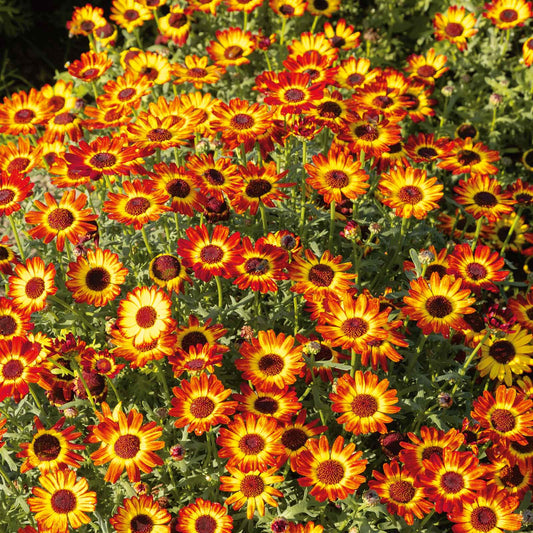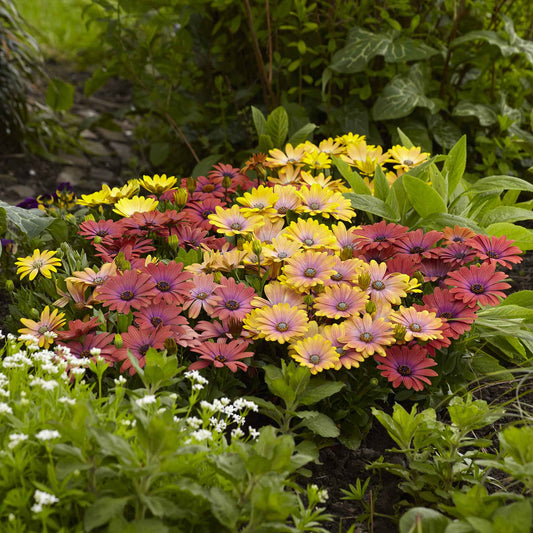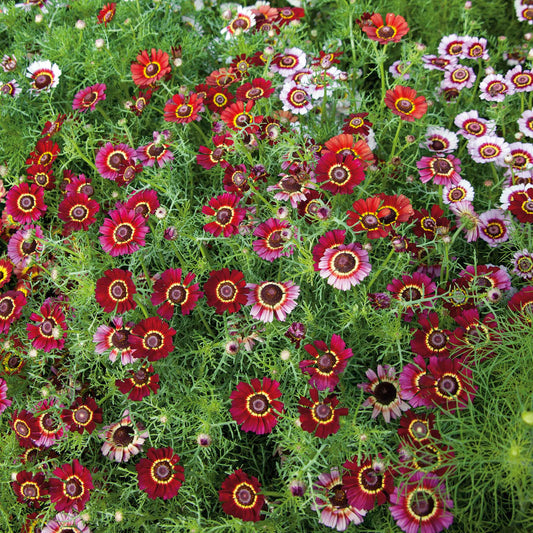-
main-collection-product-grid

Daisy Seeds - German Flag
Whatever your heritage, these bold blooms will make you proudOut of StockDaisy Seeds - German Flag
Whatever your heritage, these bold blooms will make you proudRegular price As Low As $4.99Regular priceUnit price per -
main-collection-product-grid

Cape Daisy Seeds - Akila Hawaii Sunset Mix
Compact, well-branched, tight structure, covered in sunset colorsCape Daisy Seeds - Akila Hawaii Sunset Mix
Compact, well-branched, tight structure, covered in sunset colorsRegular price $8.99Regular priceUnit price per -
main-collection-product-grid

Daisy Seeds (Painted) - Flame
Fiery crimson blooms seem to glow in the twilightOut of StockDaisy Seeds (Painted) - Flame
Fiery crimson blooms seem to glow in the twilightRegular price As Low As $5.49Regular priceUnit price per
Growing daisies in your yard
- 19 daisy seed varieties
- Daisies are easy to grow, fun-loving flowers
- Attracts pollinators
- Prefers full sun exposure
growing your own daisies from seed
Over time, daisies have become one of the most commonly recognized flowers in existence. Chaucer called it "eye of the day". The name "daisy" is considered by many to be a corruption of "day's eye", the reason being that the entire head closes at night only to open again the following morning. Native to central, western, and northern Europe, the daisy has become widely naturalized in most temperate regions, including the Americas where it is widely used as ground-cover.
The multiple uses of daisy blooms
Though no introduction is needed, not everyone knows that much about daisies. Traditionally used for making daisy chains for children, there is so much more to this cheerful flower. They are perennial herbaceous plants that are not just pretty, but edible! The young leaves can be prepared and eaten in salads, or cooked. Flowers are often eaten in salads or used as decoration on cakes. When grown under the ideal situations, daisies have an incredibly long flowering season, sometimes even producing a flower or two in the winter. There are almost endless varieties to choose from, meaning there is a daisy for even the most particular gardener.
daisy seed germination
Adding to their appeal, daisies are well-known for being almost foolproof to grow. Plant them in the spring, summer, or fall in a sunny area with well-draining soil. Because they are so easy to grow, most gardeners simply sow the seeds directly in the garden. Simply prepare the soil by using a rake or a hoe to scratch the top of the soil. Then, toss the seeds on top of the soil, only lightly covering with about 1/8th an inch of soil. While the seeds are germinating, it is important to maintain a good level of moisture. The germination period is typically 14 days. If desired, a general fertilizer can be applied in the early growing stages, and monthly thereafter. For bigger, brighter flowers, you can switch to a high phosphorus fertilizer before the daisies bloom.
Once established, you can separate your varieties by division every three to four years to avoid overcrowding. If you live in a cold climate, give your daisies a layer of winter protection with mulch.
For more information about planting, growing, and caring for daisies, see the Daisy Seeds Planting Guide.


